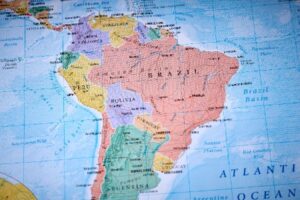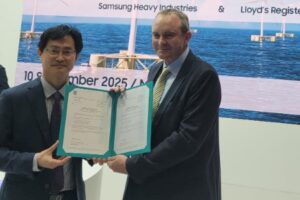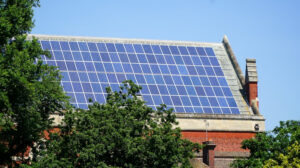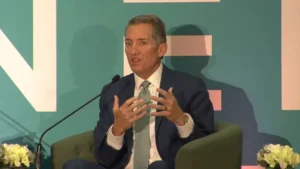A “postcard from the future,” Hawaii says aloha to “most advanced” BESS in the world
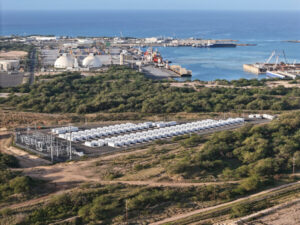

The Kapolei Energy Storage facility on Oahu (Courtesy: Plus Power)
The Kapolei Energy Storage facility on Oahu, Hawaii is now operational, according to Plus Power. The company is calling it the most advanced grid-scale battery energy storage system in the world.
“This is a landmark milestone in the transition to clean energy,” said Brandon Keefe, Plus Power’s Executive Chairman and co-founder. “It’s the first time a battery has been used by a major utility to balance the grid: providing fast frequency response, synthetic inertia, and black start. This project is a postcard from the future — batteries will soon be providing these services, at scale, on the mainland.”
The KES battery project, located on eight acres of industrial land on the southwest side of Oahu near Honolulu, uses 158 Tesla Megapack 2 XL lithium-ion iron phosphate batteries, each roughly the size of a shipping container. It can offer the grid 185 MW of total capacity and 565 MWh of electricity, acting as an electrical “shock absorber” often served by combustion-powered peaker plants — responding in the blink of an eye (250 milliseconds), rather than the several minutes it takes combustion plants to come online.
“KES is an important part of a portfolio of resources that work together to provide reliability and energy security on Oahu’s isolated island grid,” said Jim Alberts, senior vice president and chief operations officer of Hawaiian Electric. “Energy storage technology that responds quickly to constantly changing conditions is an essential tool for us to use to manage the grid and operate it as efficiently as possible.”
“This is the first time a standalone battery site has provided grid-forming services at this scale – this is a critical application for high renewable penetration grids supplied by 185 MW of Megapack inverters,” said Mike Snyder, Sr Director, Tesla Megapack.
Customer-sited solar power has become so abundant that Hawaiian Electric must regularly ‘curtail’ or turn off large volumes of existing utility-scale solar and wind to keep the electric system in balance.
Hawaiian Electric’s modeling found that in its first five years in operation, the KES battery plant will allow the utility to reduce curtailment of renewable energy by 69% and integrate 10% more new utility-scale renewables than previous models had allowed while providing for the continued rapid growth of individually-owned renewables such as rooftop solar.
According to Hawaiian Electric, the project will also save its customers money. The Hawaiian Electric filing for KES estimated it will reduce electric bills by an average of $0.28 per month over a 20-year contract life.
The battery plant’s specifications include:
- 135 MW / 540 MWH of capacity and energy
- 50 MW / 25 MWH of additional ‘fast frequency response’ to help keep the electric grid stable
- ‘Virtual inertia’ to replicate the power-smoothing function of a spinning turbine
- ‘Black start’ capabilities, which will support grid recovery in the event of a blackout
The KES plant interconnects near three of Hawaiian Electric’s critical power generation facilities, enabling KES to support the reboot of those power plants in the event of an island-wide emergency, otherwise known as ‘black start’ capability.
“No one has used batteries to provide such a diverse range of grid-forming services at this scale before in the world,” Keefe said.
The KES batteries will help replace the grid capacity formerly provided by an AES coal power plant less than a mile away. That plant once produced up to one-fifth of the electricity on Oahu, home to nearly a million of Hawaii’s 1.5 million people and Army, Navy, Air Force, and Marine Corps bases that require reliable power. The coal plant closed in September 2022.
Plus Power operates multiple KES-sized projects, and has a rapidly growing development portfolio of large-scale battery systems with 10 gigawatts of projects in transmission queues across 28 states and Canada, with over $1.8 billion in project financings announced in October 2023.
“Plus Power is in the business of solving hard climate problems,” said Keefe. “Our projects, like KES, help our customers provide affordable, reliable, clean electricity on hot summer afternoons and cold winter nights, while enabling the decarbonization of the electric grid.”
By June 2024, Plus Power will be operating seven additional large-scale battery energy storage plants across Arizona and Texas, for a total of 1325 MW / 3500 MWh.
“This project provides another example of Hawai’i’s leadership in the clean energy transition,” said Mark B. Glick, Hawai’i’s Chief Energy Officer. “The grid modernization strategies employed by Plus Power support a cleaner, more reliable, and more affordable energy system.”

